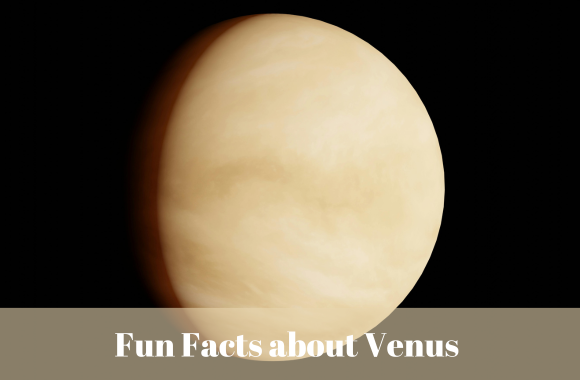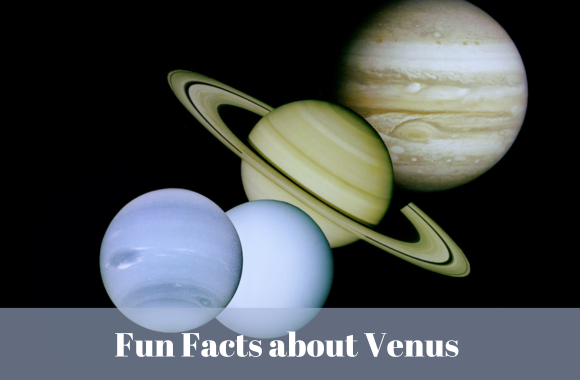Our Location
Islamabad, Pakistan
Venus is a planet that resembles Earth in size and structure, although it rotates slowly in the opposite direction of other planets. With surface temperatures high enough to melt lead, it is the hottest planet in our solar system due to a runaway greenhouse effect caused by its thick atmosphere. Views from beneath the clouds show mountains with strange shapes and volcanoes.
Here we are discussing 12 fun facts about Venus

Because of its similarities to Earth in terms of size, mass, and composition, this planet—which is the second nearest to the Sun is frequently referred to as Earth’s twin. We will investigate the 12 fun facts about Venus. There is plenty to discover about this enigmatic planet, from its peculiar atmosphere to its intense temperatures. Now, let’s get going.
Venus is the second planet from the Sun and our closest planetary neighbor. Being the hottest planet in our solar system, it is sometimes referred to as Earth’s twin.
The nearest planet in the solar system to Earth is Venus! Often referred to as our “sister planet,” she is the second planet from the Sun and has a diameter and density that are quite similar to our own.
A day on Venus is longer than a year. Venus takes longer to complete one rotation on its axis than it does to complete one orbit around the Sun. That is only 224.7 Earth days to complete an orbit of the Sun, and it takes 243 Earth days for a planet to rotate the longest rotation of any planet in the Solar System.
Venus is behind the Moon, the second-bright natural object in the night sky. Venus’s atmosphere is clouded up with sulfuric acid, which makes the planet dazzling and reflective and blocks our view of its surface. Because of its brightness, you can see it throughout the day if you know where to look and it’s clear.
Plotting of a planet’s journey across the sky dates back to the second millennium BC, with Venus being the first. It is hard to determine who discovered Venus because the planet is easily visible with the unaided eye. Nonetheless, over the ages, humans have been able to gauge Venus’s movements, including the infrequent transit of Venus, which is when the planet seems to pass in front of the Sun.
When observed from a dark location, Venus’s brightness is so intense that it casts shadows. Await the next Moon phase, when it will not be present. When observed from a dark location, Venus’s brightness is so intense that it casts shadows. Await the new Moon phase, when it will not compete with the previous Moon.
Venus’s axial rotation is clockwise. The majority of planets in the Solar System circle the Sun in an anticlockwise manner and spin counterclockwise on their axes. Venus rotates clockwise on its axis but likewise circles the Sun counterclockwise. The idea that it was knocked off its upright posture early in its existence is one explanation for its strange rotation! Uranus is the only planet in the Solar System that rotates in a clockwise direction.
There are large lava plains, mountains, volcanoes, and craters throughout Venus’s surface.
Venus’s creamy-white luminosity is caused by sunlight reflecting off sulfuric acid clouds. Venus is the most reflective planet in our solar system, reflecting 76% of the sunlight that strikes it. This makes Venus appear to be a mirror. Venus is perpetually covered in clouds of concentrated acid droplets.
Venus takes her name from the Roman goddess of beauty and love. Due to her brilliant, glittering look in the sky, it is believed that Venus was called after the lovely Roman goddess who was the Greek Aphrodite’s counterpart. It would have been the brightest of the five planets that ancient astronomers knew.
The atmospheric pressure of Venus is ninety times that of Earth. That is comparable to the pressure in the Earth’s seas at a depth of one kilometer.
After the Sun and the Moon, Venus is the third-brightest object in the sky. The planet is frequently called the “morning star” or “evening star” because it appears as a brilliant light in the morning or evening sky.

One of the most fascinating planets in the Solar System is Venus, the second planet from the sun. It is incredibly intriguing to study because of its thick atmosphere, intense heat, and resemblance to Earth. Here are a few fun facts about Venus for kids.
Venus has no seasons at all, spins backward, and has days that are longer than years. Like Earth, it may have once been an inhabited ocean world, but that was at least a billion years ago.
“The Morning Star” is one of Venus’s nicknames. Another name for it is the Evening Star. Venus is a planet, not a star, of course.
Venus is a Latin name for a girl. Venus, the name-giver of the Roman goddess of beauty and love, is a daring but seductive option for young ladies. The planet Venus, which is the second closest to the sun, is distinguished from other planets in the night sky by its brilliant shine.
Diameter of 7,500 miles (12,100 kilometers). The third-smallest planet in the solar system is Venus. It’s not that much smaller than Earth. Surface: rugged and dry.
The planet was referred to as morgensteorra (morning star) and aefensteorra (evening star) in Old English. The planet was not given the name “Venus” until the thirteenth century C.E. (in classical Latin, the morning star was known as Lucifer even though it was revered by the goddess Venus).
Venus Spins the Other Planets’ Opposite Way. Every planet, except two, would rotate in unison. Venus’s axial rotation is clockwise. Its “day” is even longer than its year, which is 225 Earth days, at 243 Earth days. (Uranus is the other spinning weirdo; it rotates on its side.)
Images are Self-generated with Canva